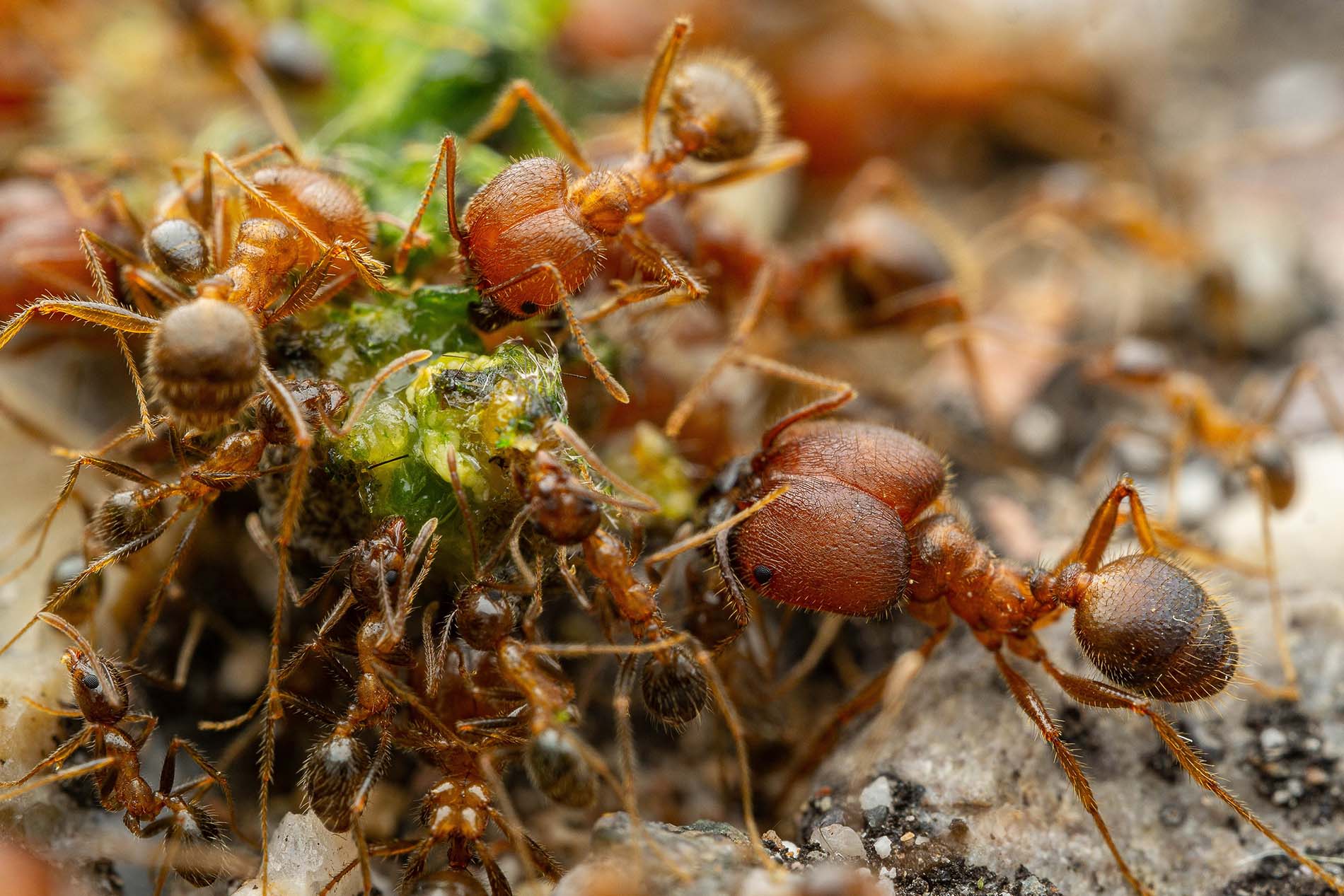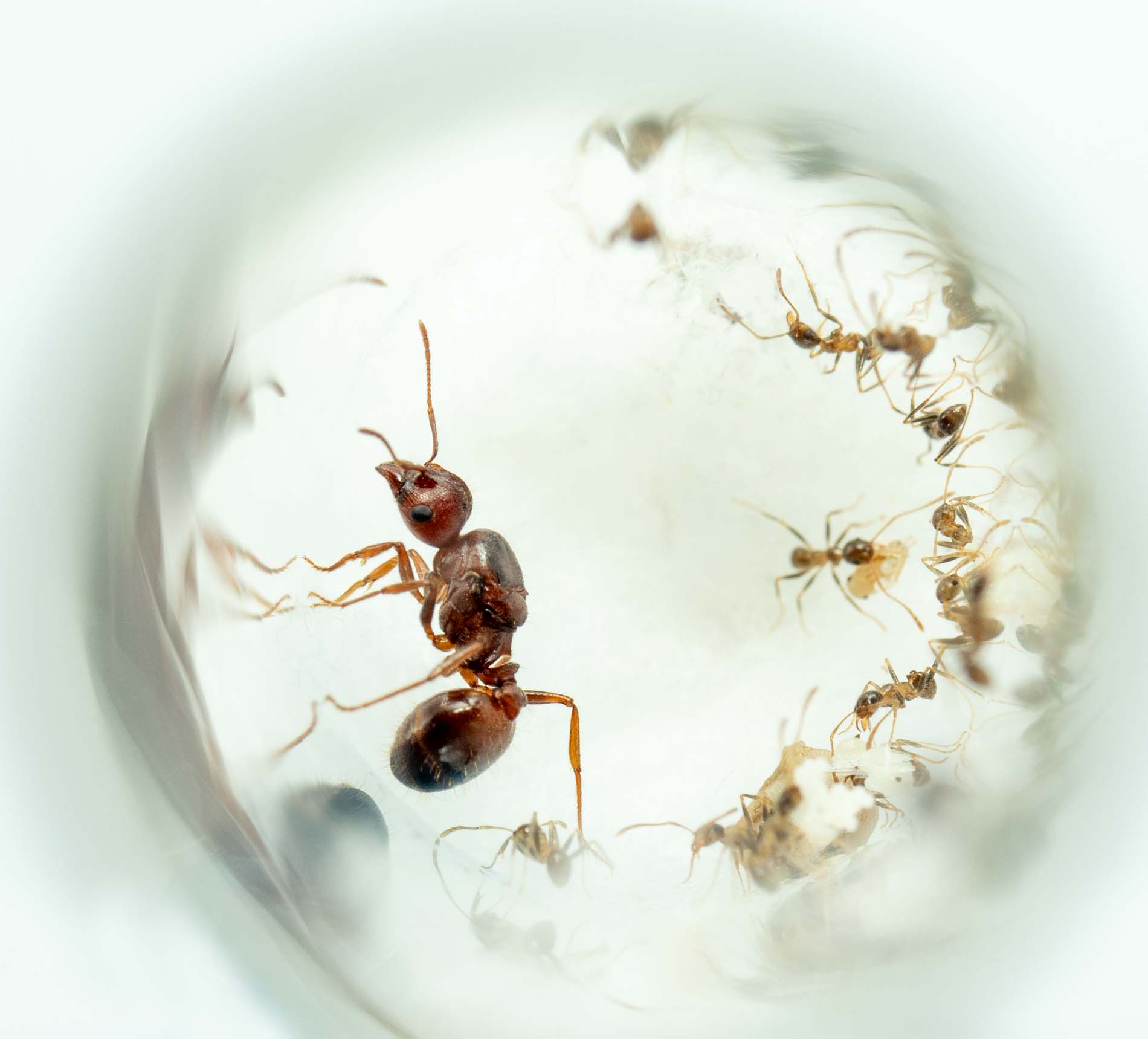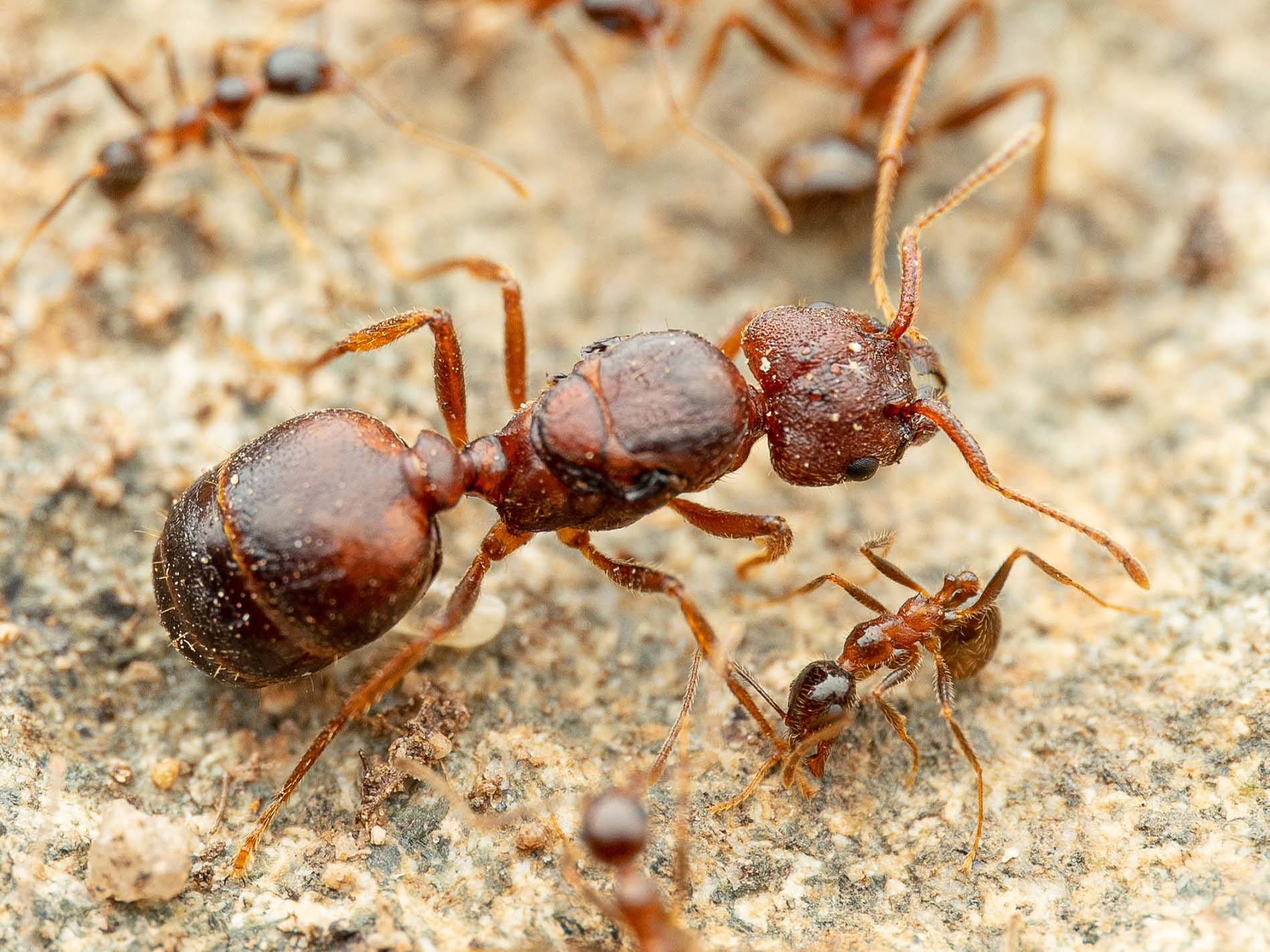Big-Headed Ants (Pheidole obtusospinosa)
Pheidole obtusospinosa is a small ant species found in the Southwest US and Northern Mexico. It is unique as one of the few trimorphic species, with workers, majors, and supermajors! This species is available in Arizona Only.
Product Description
Big-Headed Ants are known scientifically as Pheidole sp. These ants are tiny but make up for their small stature with fast-growing colonies. Colonies have both minor workers and majors, called “big-headed ants” due to their significantly larger heads. The minors handle most of the daily labor like foraging and brood care, while the majors serve primarily as defenders and are critical for tasks such as cracking seeds. Observing the majors using their powerful jaws to process food is a rewarding experience.
Difficulty Level
Known for their industrious behavior and diverse dietary needs, these ants are relatively easy to care for, making them suitable for beginner ant keepers.
Temperament
Pheidole are active and aggressive foragers. They are known for quickly overtaking food sources. Although they have a defensive nature, they don’t sting or spray formic acid. They will bite if given the chance, but the bites are barely noticeable.
Feeding
Pheidole ants are omnivorous and benefit from a varied diet. Their major workers specialize in cracking tough food items, so offering diverse options is key.
Protein Sources
- Insects: Crickets, fruit flies, mealworms (frozen or live), cockroaches
- Boiled eggs
Seeds
Seeds are a crucial part of Pheidole’s diet, especially for species that naturally store them in their nests. Offer:
- Dandelion Seeds
- Grass seeds
- Millet
- Sunflower seeds (shelled and unsalted)
- Chia seeds
- Sand Dropseed
Crush larger seeds slightly to make them easier for the ants to process.
Sugars (Optional if Seeds are Provided)
- Sunburst (Recommended)
- Sugar water (50/50 mixture of sugar and water)
- Honey (diluted with water)
- Fruits: Apples, grapes, or bananas
Water
Provide a constant supply of fresh water. We recommend using liquid feeders to dispense water.
Feeding Schedule
- Feed protein 2-3 times per week.
- Provide seeds consistently as a long-term food source.
- Sugars can be offered daily in small amounts.
- Remove uneaten food to prevent mold.
Ant Farm (Habitat)
Pheidole thrive in a more humid environment. Be careful to keep the heat cable away from water ports in the nest to avoid excessive condensation, which can be a drowning hazard for the ants.
- Nest: Setups with gypsum cement work well due to their excellent water absorption. Our Nectar Nests are ideal once the ants move out of their test tube.
- Outworld: Provide a spacious outworld for foraging and exploration. Place water and food in the outworld, and expect the ants to form a trash pile of debris like seed husks and dead insects.
- Humidity: Keep the nesting area humid (60% or higher).
- Temperature: Maintain a temperature of 75-85°F. We recommend using a Zoo Med heat cable for a heat gradient.
- Substrate: Add minimal sand to prevent nesting in the outworld.
Common Challenges
Escapes
Pheidole ants are skilled escape artists. To prevent escapes:
- Seal nest gaps.
- Apply a barrier of fluon to the upper walls of the outworld.
- Regularly check the setup for vulnerabilities.
Mold
To prevent mold:
- Avoid over-humidifying the nest.
- Remove uneaten food promptly.
Overpopulation
Pheidole colonies grow rapidly. If the colony becomes too large for your setup, consider splitting it or upgrading their habitat.


